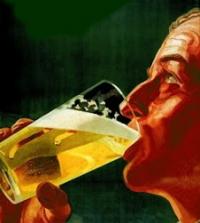I agree with everything schwanz said. I do take Ken's perceived results as great news though. if the brewtan made the beer noticeably worse Ken would be the first to notice I think.

the official brewtan-b thread
#101

Posted 29 June 2016 - 08:25 AM
#102

Posted 29 June 2016 - 09:00 AM
I agree with everything schwanz said. I do take Ken's perceived results as great news though. if the brewtan made the beer noticeably worse Ken would be the first to notice I think.
Agreed and that's why I'm not making any grand pronouncements at this point. I want to do a few more trial brews and triangle tests.
#103

Posted 29 June 2016 - 09:12 AM
#104

Posted 29 June 2016 - 09:15 AM
That makes sense. With potentially multiple effects on the wort/beer it becomes pretty difficult to untangle them independently.
Thanks for the cogent summary of what I was trying to say with many more extraneous words!
WAS it originally intended only as a clarifier? I wasn't aware of that.
I wouldn't say it was only intended as a clarifier, but it is marketed, in part, as promoting colloidal stability by precipitating a subset of proteins. Those proteins are also targets of oxidation and potential sources of oxidation, according to my cursory investigation into the biochemistry.
#105

Posted 29 June 2016 - 09:28 AM
Something is different to me, there is no question. ...This latest batch of helles is so unbelievably smooth it's almost too smooth. I say that because between the distilled water and what I think is reduced oxidation, the beer may not be as crisp as it could be.
However, wasn't this beer made with a malt that you have never used before, as well as being made with softer water? There's an awful lot of variables there. This beer is pretty young, too, I assume, since you haven't had the BB for long. Are familiar with how your lagers taste at this stage?
I don't really mean to come off as a skeptic, just trying to avoid yet another homebrew myth built on anecdotal evidence.
#106

Posted 29 June 2016 - 09:37 AM
I hear that. Yes, this was made with Barke Pils and 25% distilled water. The distilled water is not really a variable as I have done that many times but not ALL the time. The Amarillo-Citra Pale Ale was made exactly as I would normally make it and I notice a difference in that beer too. I totally understand someone wanting proof or data and I'm sure that others will have their opinions or maybe there will be a Brulosophy "Exbeeriment" on this topic at some point which may or may not shed light on this.However, wasn't this beer made with a malt that you have never used before, as well as being made with softer water? There's an awful lot of variables there. This beer is pretty young, too, I assume, since you haven't had the BB for long. Are familiar with how your lagers taste at this stage?
I don't really mean to come off as a skeptic, just trying to avoid yet another homebrew myth built on anecdotal evidence.
#107

Posted 29 June 2016 - 10:16 AM
...maybe there will be a Brulosophy "Exbeeriment" on this topic at some point which may or may not shed light on this.
That would be great, since my brewery isn't built to control 2 simultaneous batches and it would be very difficult for me to get the number and quality of tasters that they get.
That reminds me, is anyone testing just using the Brewtan B in the boil? That might go some distance toward separating any potential effect from inhibition of HSA. However, since most protein removal occurs in the tun, it wouldn't quite be equivalent.
#108

Posted 29 June 2016 - 10:18 AM
maybe there will be a Brulosophy "Exbeeriment" on this topic at some point which may or may not shed light on this.
Keep in mind that other people do experiments, too...some of them with a larger sample size....
#109

Posted 29 June 2016 - 10:24 AM
True. Thank Jeebus that there are people who shed light on these things because I don't have the time, resources or tools to do it. I would also like to say thanks to you for looking around and finding Brewtan in the first place. I'm not sure how a standard homebrewer would have found out about this since Wyeast would only sell it to commercial breweries and no other US outlet exists. I feel lucky to know about it.Keep in mind that other people do experiments, too...some of them with a larger sample size....
I'm going to drop the brewtan talk for a bit while some others brew with it and express their opinions. Some may find something positive, others may not. I feel like I'm seeing some very different results but I have no way of explaining it or proving it. There are a lot of good scientific minds in here and I am not one of them. So let's see what happens if some time goes by and some other brewtan beers are sampled and some other opinions are posted.
#110

Posted 29 June 2016 - 10:25 AM
Keep in mind that other people do experiments, too...some of them with a larger sample size....
subtle!
#111

Posted 29 June 2016 - 10:55 AM
I used it in the pilsner I brewed on Sunday and I think it made my beer sentient. Every time I go near the fermentor it's like I hear billions of faint voices... "feed meeeeeeeeeeeeeeeeeeee"
#112

Posted 29 June 2016 - 11:02 AM
subtle!
As subtle as I get! ![]()
#113

Posted 29 June 2016 - 12:27 PM
#114

Posted 29 June 2016 - 12:37 PM
Quick funny story: I just went to one of the local suppliers to pick up some more Barke Pils, Hallertau and other stuff. The woman that runs the place is an experienced brewer and has been brewing for 15+ years. I mentioned "low-O2" brewing to her and she said, "Like hot-side aeration?" and we talked through all of this stuff about picking up O2 in the mash, stirring, pouring, running off, etc. and I told her that there was 'a movement' about this lately. She winced, shook her head and said, "I don't buy it. There is absolutely no way that it would cause a problem if you poured your mash water into the MT, stirred, etc". She's only one person but she echoes how a lot of other people are reacting to the information that's going around.
I talked to a lot of people about this at HomebrewCon and not one of them gave the theory any credence. I guess what really makes me go "hmmm" is that they're trying to recreate German commercial beer, but no one can give an example of a commercial German brewery that does anything like it.
I sent Joe Formanek a link to this thread in the hope that he may have time to pop in
Edited by denny, 29 June 2016 - 12:38 PM.
#115

Posted 29 June 2016 - 01:04 PM
It would be great if someone who has used it would chime in with some information about what it does and why it works (if it works). I kind of feel like the GBF guys now saying, "JUST TRY IT!" and I also kind of feel like the guy who saw a UFO.I talked to a lot of people about this at HomebrewCon and not one of them gave the theory any credence. I guess what really makes me go "hmmm" is that they're trying to recreate German commercial beer, but no one can give an example of a commercial German brewery that does anything like it.
I sent Joe Formanek a link to this thread in the hope that he may have time to pop in
#116

Posted 30 June 2016 - 08:24 AM
We're not saying you're crazy, Ken. You're talking on the internet to a bunch of other middle aged like minded men about the minutia of beer. We know you're crazy, take a seat in the circle and pass the beer.
#117

Posted 30 June 2016 - 10:16 PM
Made my first Brewtan beer tonight. My first 30min boil too (multiple new things) so grain of salt with my observations here. A Saison with 20% wheat malt FWIW. All numbers were hit spot on. Mash pH of 5.45. I didn't see any pink foam. The gunk in the bag seemed darker than usual and there seemed to be more proteinaceous material/gunk stuck inside the bag and on top of the mash. No real distinct difference in wort clarity going into the kettle (out of the bag) but it was darker out than usual so not a good observation. Did not get much gunk on the top of the hot break foam, just white foam. Not a ton of break material stuck to the kettle after the foam subsided either and that's a bit unusual. I always whirlpool manually after I chill and let my wort settle 20 min or more before I rack to the fermentor so the hops settle and the top layer of wort typically is crystal clear. Not tonight. It wasn't super hazy but definitely less clear than usual, not crystal clear. Was it the wheat? I dunno. I always take some trub to the fermentor during racking so nothing unusual about how it looked going into the fermentor.
Anyhow thats what I have. Really looking forward to the beer though…. regardless of Brewtan B and 30 min boil.
#118

Posted 01 July 2016 - 08:30 AM
#119

Posted 01 July 2016 - 09:37 AM
Ken, I'm not gonna tell ya that what you were tasting wasn't related to oxidation, but I can say I've never heard symptoms of oxidation described as "overly harsh and the finish was not smooth".
#120

Posted 01 July 2016 - 09:43 AM
I'd check the PH of the beer. Smooth and crisp are mouthfeels which is affected by PH. I don't know for sure, but I would expect a PH closer to water to possibly be smoother - lacking bite so to speak. Then I'd look at water composition.
My wild ass guess is that oxygen and oxides that are unreacted in the beer due to the brewtan might raise the PH of the beer.
My other wild ass guess is that the brewtan helps pull out volatile compounds that are in the hops that cause "harshness" in young beer.
0 user(s) are reading this topic
0 members, 0 guests, 0 anonymous users











